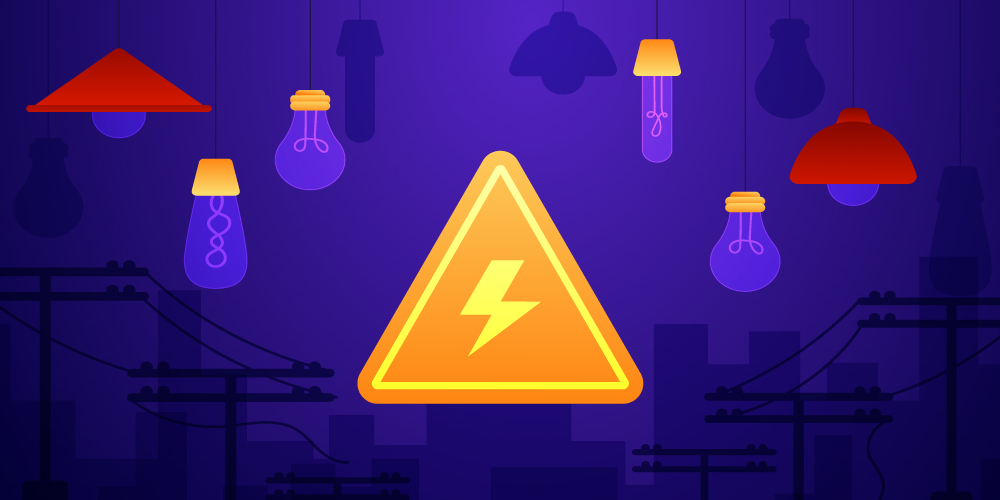If you've lived in Texas for a while, you've probably noticed that electricity rates can be a bit unpredictable. One month, your bill's manageable; the next, it's a different story. These fluctuations aren't random—they're tied to several critical factors in the Texas energy market. But don't worry; with the right tools and information, you can effectively understand these patterns and better prepare for these fluctuations.
Texas energy deregulation plays a massive role in this volatility. Unlike in many other states, Texas consumers can choose their energy provider. Although it leads to more competition, it also makes rates more sensitive to changes in demand, supply, and market trends. That's why you'll see such wide swings in electricity rates in Texas, particularly when the weather changes or supply is affected.
Preparing for these fluctuations isn't just a precaution but a necessity for residents and business owners. If you don't plan, unexpected price hikes could seriously affect your budget. Whether you want to manage costs at home or keep your business energy-efficient, staying ahead of Texas electricity trends is critical.
But how do you do that? How do you prepare yourself for electricity rates that keep fluctuating? The simple answer is to know what drives these shifts and what you can do about them. You'll be in a much better position to protect yourself from the impact of rising electricity costs when you are better prepared for it, and we will show you how you can do that.
Overview of the Texas Energy Market
The Texas energy market is unique in many ways, and understanding how it operates can give you an edge in managing fluctuating electricity rates. Unlike most states, Texas runs a deregulated energy market through the Electric Reliability Council of Texas (ERCOT).


It means you have the power to choose your electricity provider, but it also means prices can shift rapidly based on competition, demand, and supply. Let's look at what makes the Texas energy landscape so different and how renewable energy shapes the future.
How Texas Energy Market Differs from Other States
In Texas, energy deregulation puts you in the driver's seat, allowing you to pick a plan that suits your needs. Most other states follow a regulated model, where a single utility company controls electricity generation, transmission, and sale. However, in Texas, ERCOT oversees a more competitive setup.
While this competition can lead to lower prices when demand is steady, it also creates a situation where electricity rates fluctuate more frequently. Events like extreme weather or changes in supply can cause sharp price hikes or drop almost overnight. This deregulation boosts competition, which is excellent in theory but can leave you vulnerable to unexpected rate changes.
For example, during a heatwave, the demand for energy skyrockets, and so do prices. Conversely, increased competition among providers can push prices down. So, while you can choose your provider, this deregulated structure requires you to be extra vigilant in monitoring market trends to avoid being caught off guard.
The Role of Renewable Energy in Texas
Renewable energy, particularly wind and solar, has become a significant player in Texas's energy mix. Texas produces about 26% of all wind-powered electricity in the U.S., leading the nation in wind energy production. Integrating more renewable energy sources into the grid helps stabilize electricity rates.
However, renewable energy doesn’t come without its challenges. Wind and solar power are weather-dependent, meaning their output can fluctuate based on environmental conditions. When production from these sources dips, reliance on traditional energy sources may increase, causing temporary price spikes.
However, as renewable energy infrastructure continues to improve, the hope is that these energy sources will help keep electricity prices more stable in the long term, benefiting both the environment and your energy bills.
Common Causes of Texas Electricity Rate Fluctuations
Electricity rates in Texas can change rapidly, and several key factors contribute to these fluctuations. Each factor is critical in shaping your energy bills, whether extreme weather or supply and demand imbalances. Let's break down the leading causes of these changes.


Weather-related Factors
Weather plays a huge role in electricity rates, particularly in Texas, where extreme temperatures are typical. Both summer heatwaves and winter cold snaps can send electricity demand soaring, directly impacting your electricity cost. Let's look at how these weather conditions affect energy consumption and prices.
- Heatwaves and Cooling Demand: In the summer, particularly in cities like Houston, temperatures can soar past 100°F, leading to a massive spike in air conditioner use. This increased demand pushes up electricity rates in Houston, especially during peak hours.
- Cold Snaps and Heating Needs: When unexpected cold snaps hit, like the winter stormof 2021, the demand for heating skyrockets. At the same time, freezing conditions can disrupt electricity supply, causing prices to surge.
- Grid Strain: Both heatwaves and cold snaps strain the electricity grid, leading to potential shortages and higher prices.
Supply and Demand Imbalances
The delicate balance between electricity supply and demand is critical in determining energy rates. When demand spikes or supply drops, prices can change rapidly. Texas's growing population and increasing energy needs mean that the state frequently experiences periods of imbalance. Below, we discuss how different supply and demand scenarios influence your electricity rates.
- High Demand Periods: Texas's booming population means the average household electricity consumption is higher than in many other states. During high-demand periods, like hot summer afternoons or cold winter nights, rates tend to increase because of high energy usage.
- Supply Shortages: When power plants go offline for maintenance or due to natural disasters or disruption of fuel supplies, electricity supply decreases. This reduced supply can lead to significant price hikes due to the high demand.
- Low Demand Periods: Milder seasons, like spring and fall, typically require less energy. These times often offer lower electricity rates, making them the best time to shop for electricity in Texas and lock in a favorable plan.
Regulatory Changes and Energy Policies
Government policies and regulations also substantially impact electricity prices in Texas. Although these policies help improve the grid's efficiency and sustainability, they can lead to price fluctuations as providers adjust to new rules. These changes, including production regulations and grid upgrades, are critical drivers of electricity rates. Here is how these regulatory factors play into the cost of electricity at your Texas home or business.
- Energy Production Regulations: Policies promoting renewable energy use, like wind and solar, can stabilize prices in the long term. However, as renewables are weather-dependent, they can cause short-term rate variations.
- Grid Upgrades: Regulations that require utilities to invest in infrastructure improvements or modernize the grid can lead to temporary price hikes. These upgrades are essential for maintaining grid reliability and preventing outages during peak demand.
- PUC and ERCOT Oversight: The Public Utility Commission of Texas (PUC) and ERCOT (Electric Reliability Council of Texas) oversee grid operations and pricing mechanisms. Any changes in their policies — such as adjusting reserve power requirement s— can directly affect electricity rates.
How to Monitor and Predict Electricity Rates in Texas?
Keeping an eye on electricity rates in Dallas, Houston, and any other Texas city is a simple matter of being aware. It can save you from unexpected hikes on your energy bill. In Texas, where rates fluctuate due to various factors, you can use the following practical strategies to help you track, predict, and adjust for these changes effectively.


Comparing Electricity Providers and Plans
Various platforms simplify the process of finding the right plan by allowing you to compare electricity rates in Texas. This feature helps you identify the best rates in your area, whether in Houston or another part of Texas.
Using EnergyPricing.com to Compare Rates and Plans
One of the best ways to compare electricity rates by ZIP code is to use an advanced platform like EnergyPricing.com. By entering your ZIP code, you can see a list of available plans and providers, making it easier to Find a rate that fits your household's needs. Use EnergyPricing.com's tool to browse plans available in your area.
With the help of such platforms, you can assess different electricity rates in other regions to make an informed choice. Moreover, you can access different electricity plans, including variable and fixed-rate ones. Switching providers or renegotiating your current plan can save you significant time using EnergyPricing.com, as the process is straightforward.
EnergyPricing.com gives you access to the latest electricity rates in Texas, making it easier for you to monitor them. Furthermore, it allows you to identify patterns and trends by assessing the electricity rates in various parts of the state to make better energy decisions.
Tracking Market Reports and Forecasts
Another effective way to track rate changes is to monitor market reports and forecasts. These publicly available resources provide insights into the current state and future trends of the Texas electric grid and energy prices.
ERCOT Reports
ERCOT (Electric Reliability Council of Texas) regularly publishes reports that provide valuable information on electricity demand, grid reliability, and upcoming supply shortages. By reviewing these reports, you can anticipate potential rate increases or decreases. Here are some of the ways you can use the reports from ERCOT.
- Projected Loads: The organization forecasts electricity demand across Texas, highlighting periods where the grid may experience higher loads. These projections help you predict when rates might increase, especially during times of high demand, such as extreme weather events.
- Resource Adequacy: ERCOT reports on the availability of power resources to meet projected demand. If resource adequacy is tight, indicating that there may not be enough energy supply to meet demand, rates can increase due to supply shortages. Monitoring this can give you an early indication of when prices might spike.
- Transmission Constraints and Plans: The ERCOT reports also update transmission constraints, which occur when there isn't enough capacity to deliver electricity to all areas. These constraints can lead to localized price hikes, especially in high-demand areas. ERCOT's transmission plans provide insight into upcoming infrastructure improvements, which could stabilize rates in the long term by increasing the grid's efficiency.
- Grid Status Updates: ERCOT's reports can help you stay informed about the demand-supply balance, which directly impacts electricity rates.
Texas Public Utility Commission (PUC) Updates
The Texas Public Utility Commission (PUC) also provides updates on regulatory changes and energy policies. Following these reports can give you a clearer idea of when and why rates might shift.
- Policy Impacts: Regulation changes or policies can affect electricity prices, so staying updated can help you predict rate fluctuations.
- Rate Adjustments: The PUC approves rate changes proposed by electricity providers. Monitoring these updates allows you to anticipate rate increases and switch to a better plan before prices rise.
- Emergency Protocols: The Texas Public Utility Commission may implement temporary rate hikes during heatwaves or winter storms. Staying informed lets you plan for higher bills during these periods.
- Infrastructure Upgrades: The Commission oversees long-term grid improvements. These updates cause short-term price hikes but aim to stabilize rates over time.
By monitoring these resources, you'll better understand when to switch providers or lock in a new rate before prices increase.
Understanding Usage Patterns
Monitoring your household's electricity usage is as important as tracking external factors like market trends. Understanding when and how you use the most energy allows you to adjust and avoid peak-rate charges.
Identifying High-usage Periods
For many households, energy usage peaks during the summer due to increased air conditioning, particularly in cities like Houston, where temperatures often soar. On average, household electricity consumption in Texas is higher than in other states, meaning there is significant potential to save by optimizing your usage.
- Review Monthly Bills: Look for patterns in your energy consumption to see which months have the highest usage.
- Peak vs. Off-peak Hours: Adjust your energy use to off-peak hours, when rates are typically lower, and reduce consumption during peak times to avoid rate spikes.
Adjusting for Seasonality
Energy usage tends to fluctuate based on the time of year, so adjusting your household's energy habits to reflect these changes can help you lower your electric bill. You can avoid paying premium rates during peak demand by making minor adjustments, such as using energy-efficient appliances or running power-hungry electronics during off-peak hours.


Leveraging Smart Technology
Technology can significantly simplify tracking and managing electricity usage. Smart meters and energy apps allow you to monitor real-time energy consumption, helping you make informed decisions to reduce costs.
Smart Meters
Smart meters, installed by your utility provider, give you access to real-time data about your household's electricity usage. It is beneficial for families looking to optimize energy use and reduce costs. By reviewing the data from your smart meter, you can identify peak usage times and adjust accordingly.
- Real-time Data: Smart meters provide up-to-the-minute information on how much electricity you use, allowing you to make immediate adjustments.
- Optimizing Usage: Understanding your energy habits through the meter can help you shift high-usage activities to off-peak times, saving you money.
Energy Apps
Energy apps like Energy Ogre simplify finding the best electricity plans and tracking usage. These apps automatically monitor market trends and adjust your plan or usage to help you save money.
- Automated Monitoring: Apps like Energy Ogre continuously track market trends and notify you of better plans.
- Custom Recommendations: Based on your energy usage, these apps can recommend new plans to help you get the best rates.
Subscription to Energy Rate Alerts
Finally, consider subscribing to energy rate alerts, which can keep you updated on market changes. Many energy providers and apps offer alert systems. They can notify you when rates will likely increase or when a better plan becomes available.
Using Energy Rate Alerts
Several services offer rate alerts that notify you when there's an opportunity to lock in a lower rate or when prices are about to rise. These alerts can help you avoid paying more during peak-rate periods.
- Timely Notifications: Receive updates when a change in the market or a better rate becomes available.
- Informed Decisions: With these alerts, you can time switch to a new plan or adjust your energy usage to save money.
Strategies to Prepare for Electricity Rate Fluctuations
Although the electricity rates in Texas can be unpredictable, you can avoid this to a certain extent by using the right strategies. You can manage your costs effectively. Let's explore practical ways to prepare for rate fluctuations.


Switching to a Fixed-rate Plan
One of the easiest ways to shield yourself from fluctuating electricity prices is to switch to a fixed-rate plan. Unlike variable-rate plans, which change based on market conditions, fixed-rate plans lock in a steady rate for your contract term, giving you consistent monthly bills.
Platforms like EnergyPricing.com simplify the process by allowing you to compare plans and even view electricity rates by ZIP code. It helps you find the most competitive fixed-rate plans in your area.
- Stable Costs: Fixed-rate plans protect from price surges during high-demand periods, mainly when energy use spikes in the summer.
- Ease of Comparison: Online tools like EnergyPricing.com allow you to browse and choose a plan that fits your budget and needs.
Energy Efficiency Measures
Reducing energy consumption, particularly during peak price periods, can significantly reduce your electricity bill while protecting you from fluctuations.
- Upgrade Appliances: Investing in energy-efficient appliances reduces electricity usage, especially during high-demand times.
- Smart Thermostats: Automating your home's temperature with a smart thermostat can help lower energy costs by optimizing when you use your heating or cooling systems.
- Insulation: Proper insulation keeps your home's temperature stable, reducing the need for extra heating or cooling and lowering energy consumption.
Installing Renewable Energy Solutions
Investing in renewable energy, like solar panels or small-scale wind energy, offers long-term cost control by producing your electricity. Texas, known for its abundant sunshine, is ideal for solar power.
- Solar Panels: By generating your power, you rely less on the grid and reduce your exposure to fluctuating rates. Over time, you can also save by returning excess energy to the grid.
- Incentives: Texas energy consumers have several state and federal incentives to help them offset the cost of installing solar panels, making them more affordable for homeowners.
Demand Response Programs
Demand response programs incentivize you to reduce energy usage during peak demand times, helping you save on electricity bills while supporting grid stability.
- How It Works: Providers may ask participants to reduce consumption during high electricity demand, such as hot summer afternoons. In exchange, you receive credits or reduced rates.
- Easy Enrollment: Many providers in Texas offer demand response programs, and joining is simple. You'll get a notification to reduce energy use, and participating can lead to significant savings, especially during high-demand periods.
Preparing for Future Energy Trends in Texas
The energy landscape in Texas is rapidly changing, driven by various factors like renewable energy growth, advancements in storage solutions, and community-based energy-sharing initiatives. Let's look at how these developments could impact electricity rates and how Texans manage energy in the future.


The Future of Renewable Energy in Texas
Texas is already a wind and solar energy leader, and the future points to even more expansion. The state's favorable conditions for renewable energy production mean that utility-scale solar farms and residential installations will likely grow. As more renewable sources come online, electricity prices could become more stable.
However, the intermittent nature of renewable sources like wind and solar could still lead to price fluctuations when weather conditions limit energy generation. As Texas increases its renewable energy capacity, more storage solutions will be essential to ensuring consistent supply. In the long run, Texans can look forward to more stable rates and a reduced environmental impact as renewable energy grows.
Energy Storage and Backup Systems
Energy storage systems, such as batteries, are becoming more critical as renewable energy grows. These systems allow excess energy to be stored during off-peak hours and used later when demand increases or during outages. Battery technology is becoming more affordable for homeowners, enabling greater control over electricity usage and costs.
Backup generators are also gaining popularity in Texas, particularly after events like the 2021 winter storm. These systems provide reliable power during a Texas electric grid power outage, ensuring a continuous energy supply for households and businesses. As storage technology advances, Texans can expect improved efficiency and more significant savings.
Community and Grid-level Energy Sharing
Community energy-sharing programs are emerging for neighborhoods to collectively generate and share renewable energy, lowering costs and dependence on the grid. On a larger scale, grid-level energy sharing allows excess renewable energy from one region to be used where demand is higher, improving supply and cost stability. Though still in development, these initiatives point to a more decentralized, sustainable energy future for Texas.
Final Tips for Staying Informed and Prepared
Navigating Texas's fluctuating electricity market doesn't have to be overwhelming if you stay informed and proactive. Here are some essential tips to help you manage your costs and plan for future rate changes.


Understand How Electricity Bills Work
Understanding how electricity bills work is crucial. Your bill includes charges for energy usage, delivery, and additional fees. Review your bill each month to identify patterns in your consumption. Many providers offer tools that break down your usage, helping you spot high-consumption periods and areas where you can cut back.
Learn How to Lower Electric Bill
To effectively lower your electric bill, focus on small, practical changes, such as using energy-efficient appliances and reducing usage during peak hours when rates are higher. Smart meters or energy apps can help monitor your usage and optimize energy consumption, giving you greater control over your monthly bill.
Switch Electricity Providers
If your current plan doesn't fit your needs, learning how to switch electricity providers can save you money. Use platforms like EnergyPricing.com to compare and find a plan that works for you. Switching providers is often simple and can significantly reduce electricity costs if timed correctly.
Plan for the Future
As renewable energy and storage technologies advance, staying aware of these changes can benefit you. Track trends in solar, wind, and battery storage solutions, as these could lead to more stable rates in the long run. Planning and staying informed ensures you'll be better prepared for future fluctuations in the market.
How to Prepare for Texas Electricity Rate Fluctuations: FAQs
Why do electricity rates in Texas fluctuate so much?
Electricity rates in Texas fluctuate due to several factors, including extreme weather, supply and demand imbalances, and the state's deregulated energy market. Air conditioning usage spikes in the summer, driving up demand and prices. Texas's deregulated market allows provider competition, further contributing to fluctuating rates.
How do I know when electricity rates are about to change?
Monitoring reports from ERCOT and the Public Utility Commission (PUC) is a reliable way to stay informed. ERCOT provides projections on electricity demand and grid stability, while the PUC gives updates on regulatory changes and potential rate adjustments. These resources help you predict when rates might rise, allowing you to switch plans or adjust usage.
How do electricity bills work in Texas?
Understanding how electricity bills work is crucial for managing costs. Your bill includes charges for the energy you use, fees for delivering that energy, and sometimes additional surcharges. It's based on how much power you consume, measured in kilowatt-hours (kWh). Reviewing your bill each month helps you identify patterns in your energy consumption.
How can I lower my electric bill?
To lower your electric bill, reduce energy consumption during peak demand times. You can achieve this by using energy-efficient appliances, installing smart thermostats, and ensuring your home is well-insulated. Another way to save is by enrolling in a demand response program. Monitoring market trends can help time the switch to a more affordable plan.
When is the best time to shop for electricity in Texas?
The best time to shop for electricity in Texas is typically during milder seasons like spring and fall. During these periods, energy demand is lower, which means providers are more likely to offer competitive rates. Locking in a fixed-rate plan during this time can help you avoid price hikes during the extreme weather months of summer and winter.
How do I switch electricity providers in Texas?
Switching providers is easy, thanks to Texas's deregulated market. Start by comparing electricity rates by ZIP code on platforms like EnergyPricing.com. It allows you to find the most competitive rates in your area. Once you select a new provider, you can transition from your old provider. But make sure to check if there are any early termination fees.
Is a fixed-rate or variable-rate plan better for me?
A fixed-rate plan is often better if you want stability and protection from market fluctuations. With a fixed-rate plan, you lock in your rate for the duration of your contract, ensuring predictable bills. Variable-rate plans, on the other hand, can offer lower rates during low-demand periods but leave you vulnerable to price spikes when demand rises.
Can renewable energy help lower my electricity costs?
Investing in renewable energy like solar panels can help lower your long-term electricity costs. By generating electricity, you reduce your reliance on the grid and can even sell excess power back, offsetting costs. As more renewable energy is integrated into the grid, overall electricity prices may stabilize, leading to potential consumer savings.
What are demand response programs, and how do they work?
Demand response programs offer incentives for reducing electricity usage during peak demand periods. When you participate, your provider will ask you to lower your consumption during these times, and in return, you may receive credits or reduced rates. These programs help you save money and help maintain grid stability by reducing strain during high demand.
How can I prepare for future energy trends in Texas?
The future of energy in Texas is moving toward renewable sources, energy storage, and community-driven solutions. Consider investing in renewable energy solutions like solar panels for your home. Furthermore, monitoring advancements in energy storage and community energy-sharing programs can also help you stabilize or reduce energy costs in the future.

